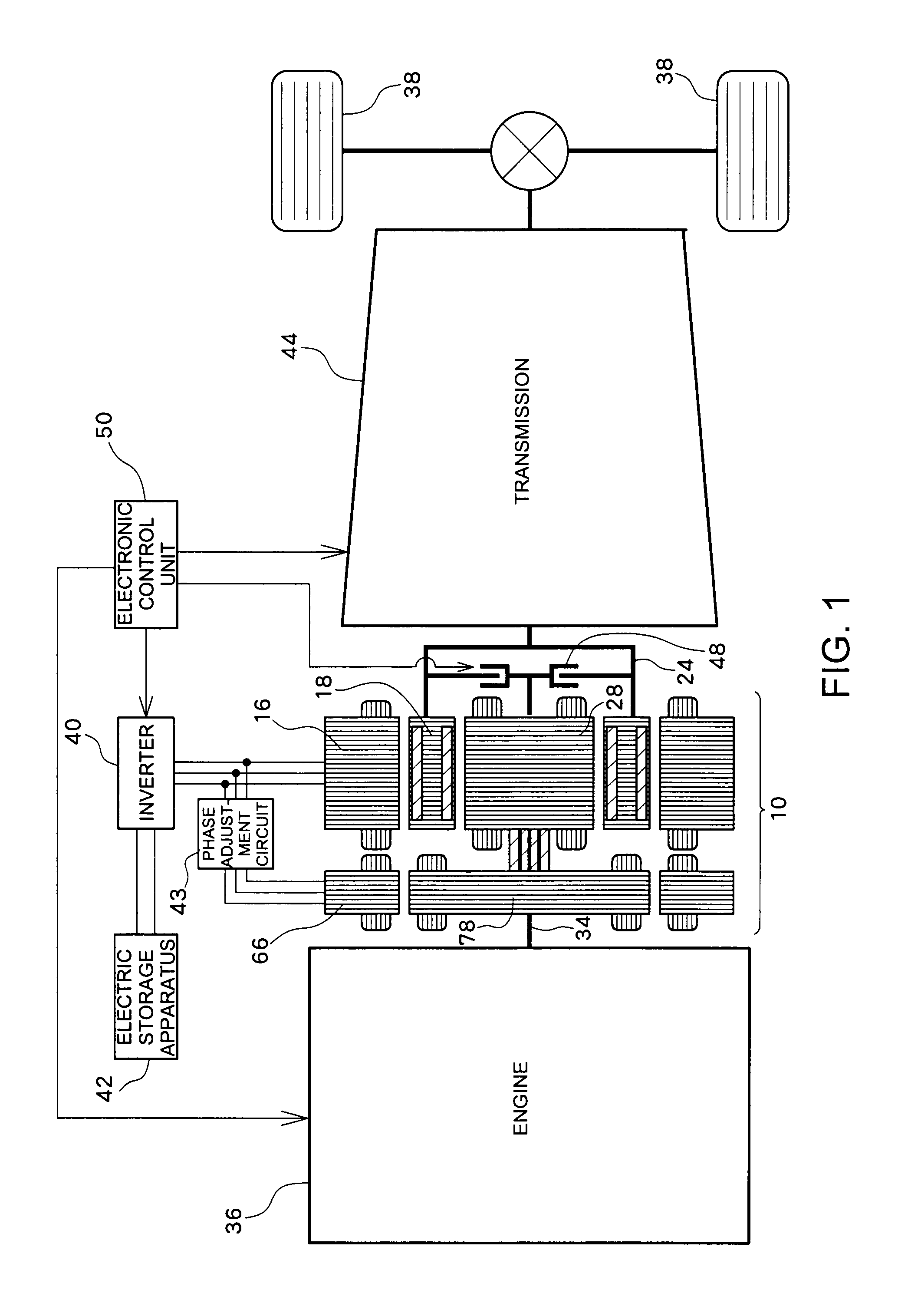Power transmission apparatus
a technology of transmission apparatus and transmission shaft, which is applied in the direction of propulsion parts, propulsion using engine-driven generators, electric devices, etc., can solve the problems of increasing apparatus cost, complicated apparatus configuration, and decreasing torque transmission capacity, so as to prevent braking torque, improve torque transmission capacity, and prevent braking torque
- Summary
- Abstract
- Description
- Claims
- Application Information
AI Technical Summary
Benefits of technology
Problems solved by technology
Method used
Image
Examples
first embodiment
[First Embodiment]
[0055]FIGS. 1 to 4 illustrate a schematic configuration of a hybrid driving apparatus including a power transmission apparatus according to a first embodiment of the present invention. FIG. 1 illustrates an overall configuration of the hybrid driving apparatus. FIGS. 2 to 4 illustrate a configuration of an electric rotary machine 10. The hybrid driving apparatus according to the present embodiment includes an engine (an internal combustion engine) 36 as a prime mover that can generate power (mechanical power), a transmission 44 provided between the engine 36 and wheels 38, and an electric rotary machine 10 provided between the engine 36 and the transmission 44. The hybrid driving apparatus according to the present embodiment can be used, for example, as a power output apparatus that can drive an automotive vehicle.
[0056]The electric rotary machine 10 includes a first stator (a first stationary element) 16 fixed to a casing (not illustrated), a first rotor (a first ...
second embodiment
[Second Embodiment]
[0097]FIGS. 15 and 16 illustrate a schematic configuration of a hybrid driving apparatus including a power transmission apparatus according to a second embodiment of the present invention. FIG. 15 illustrates an overall configuration of the hybrid driving apparatus. FIG. 16 illustrates a configuration of the electric rotary machine 10. In the following description of the second embodiment, components similar or corresponding to those described in the first embodiment are denoted by the same reference numerals and their descriptions are not repeated.
[0098]In the present embodiment, the electric rotary machine 10 includes a stator 216 fixed to a casing (not illustrated), a first rotor 228 that is disposed on the radial inner side of the stator 216 and can rotate relative to the stator 216, and a second rotor 218 that is disposed between the stator 216 and the first rotor 228 and can rotate relative to the stator 216 and the first rotor 228. As the first rotor 228 is...
PUM
 Login to View More
Login to View More Abstract
Description
Claims
Application Information
 Login to View More
Login to View More - R&D
- Intellectual Property
- Life Sciences
- Materials
- Tech Scout
- Unparalleled Data Quality
- Higher Quality Content
- 60% Fewer Hallucinations
Browse by: Latest US Patents, China's latest patents, Technical Efficacy Thesaurus, Application Domain, Technology Topic, Popular Technical Reports.
© 2025 PatSnap. All rights reserved.Legal|Privacy policy|Modern Slavery Act Transparency Statement|Sitemap|About US| Contact US: help@patsnap.com



